The lion often symbolizes leadership with power and strength due to its commanding presence and dominance in the animal kingdom.
Known for its courage and decisiveness, the lion embodies the traits many people admire in strong leaders.
Other animals that represent similar qualities include the gorilla, known for its protective nature, and the chimpanzee, admired for its intelligence and empathy.
When exploring the animal kingdom, different animals exhibit various facets of leadership.
For instance, the buffalo signifies endurance and perseverance, while the bear exemplifies strength and resilience. Both animals can inspire those who seek to foster these qualities in their leadership styles.
Understanding why certain animals represent these traits can provide valuable insights for personal development.
Whether it’s a lion’s courage or a chimpanzee’s empathy, these animals serve as powerful metaphors for leadership that balances power with wisdom and compassion.
The Symbolic Meaning of Leadership in Different Cultures
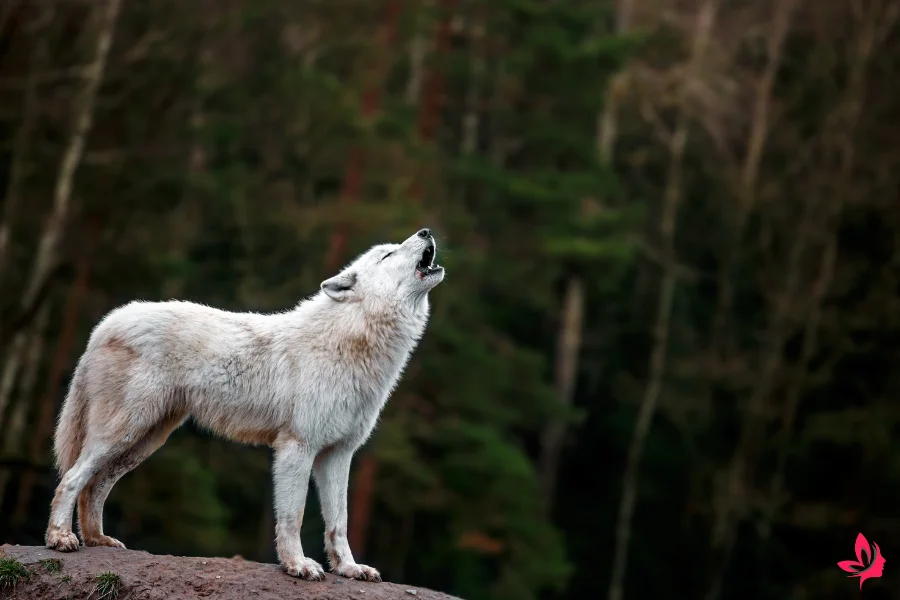
Leadership qualities in various cultures are often reflected in the symbolic meaning of animals associated with power and strength.
These symbols highlight unique qualities and inspire personal growth and inner strength among those seeking guidance from the animal kingdom.
Leadership Qualities Across Various Cultures
In different cultures, leadership qualities often manifest through animal symbolism, reflecting unique characteristics admired by those societies.
For instance, the mighty lion, known as the king of the jungle, is seen as a symbol of courage and authority in many traditions.
In Native American culture, the wolf is revered for its teamwork and loyalty, making it an ideal symbol for group leadership and strong relationships.
Meanwhile, in Chinese culture, the dragon embodies a powerful spirit animal that conveys wisdom and protection, influencing leadership practices and belief systems.
Animal Symbols of Strength in Ancient Civilizations
Ancient civilizations placed substantial emphasis on animal symbols to represent strength and leadership.
In ancient Egypt, the lion was a symbol of protection and kingly power, often depicted with pharaohs to signify their divine rule.
This association with divine authority was also present in Greek mythology, where the eagle represented strength and a connection to the gods, allowing rulers to legitimize their leadership style through these powerful archetypes.
Additionally, in ancient Rome, the wolf symbolized Rome itself, reflecting the leadership qualities of resilience and strategic intelligence within the empire.
How Native American Tribes View Leadership Animals
Within Native American traditions, animals serve as spirit guides and symbols of leadership.
The bear is often seen as a totem animal of strength and protection, embodying the bravery and endurance leaders need. The eagle, regarded for its keen vision and insight, symbolizes a higher perspective and wisdom, which can aid leaders in seeing the bigger picture within their communities.
Additionally, the buffalo holds great cultural significance as a provider and protector, reflecting the concept of selfless leadership vital to native tribes.
Apex Predators and Their Role in the Animal Kingdom
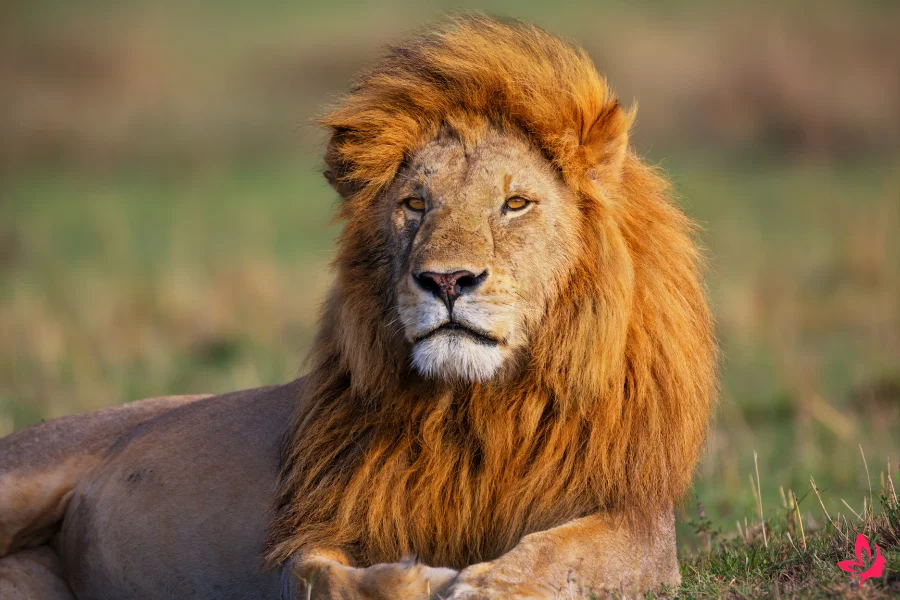
Apex predators hold significant positions in the animal kingdom, serving as symbols of leadership and power.
These animals influence their ecosystems by maintaining balance and demonstrating leadership qualities. Some are also seen as power animals in various cultures, emphasizing their important symbolic meaning.
The Mighty Lion as the King of the Jungle
The lion is widely recognized as the king of the jungle, symbolizing strength, courage, and leadership.
As an apex predator, lions play a vital role in maintaining the balance of their environment. They are known for their powerful presence and strong family bonds, often leading large groups called prides.
Lions exhibit leadership qualities by working together during hunts. They use strategic teamwork to capture prey, showcasing their ability to lead with precision and skill.
In ancient cultures, such as Ancient Egypt and Ancient Greece, the lion was revered as a symbol of royalty and bravery. These qualities continue to make the lion a symbol of leadership, inspiring many in the natural and cultural worlds.
Wolves as Leaders in the Animal World
Wolves are seen as admirable leaders due to their strong social structures and cooperative nature.
In a wolf pack, alpha males and females often share leadership. These individuals confidently guide the group, ensuring the safety and harmony of the pack.
Native American cultures often view wolves as spirit guides representing loyalty, perseverance, and community strength. Wolves communicate effectively and maintain strong relationships within the pack.
This ability to work as a team makes them a powerful archetype of leadership in the wild and as totem animals for different cultures worldwide.
Exploring the Leadership Traits of Apex Predators
Apex predators, such as lions and wolves, exhibit unique qualities that set them apart as leaders.
They demonstrate keen instincts, quick thinking, and strategic planning when securing survival. These animals inspire humans with their ability to adapt to various environments and situations, much like great leaders in the business world.
Apex predators’ symbolic significance extends beyond their ecosystems. They often embody traits valued in human societies, such as strength and resilience.
By observing these powerful spirit animals, individuals can gain insights into leadership, personal growth, and inner strength, which can guide them to become good leaders themselves.
Spirit Guides and Their Connection to Leadership
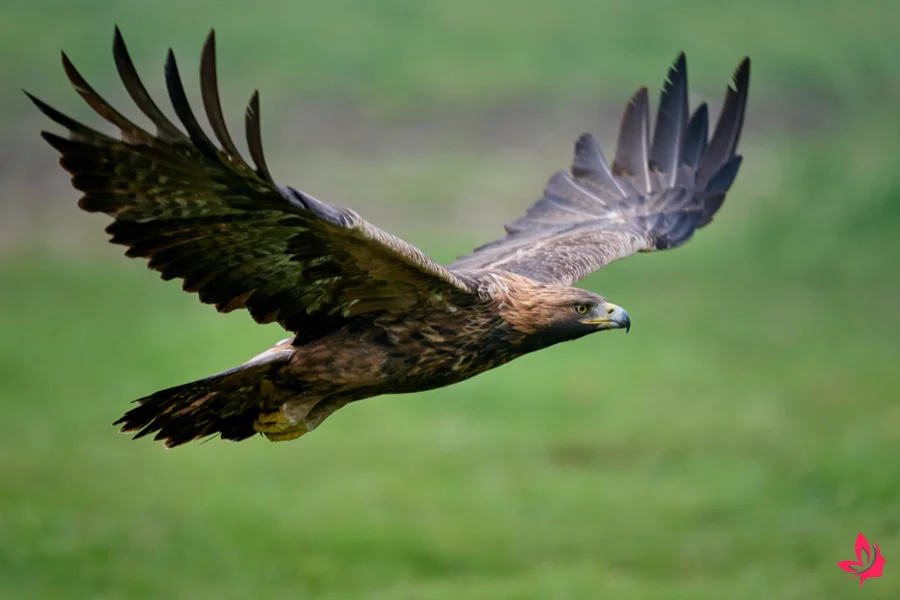
Spirit guides are believed to offer wisdom and guidance, often symbolized by animals known for leadership and strength.
These connections are recognized in various cultures, including Native American traditions, where powerful animals embody leadership qualities.
Understanding Your Powerful Spirit Animal
A powerful spirit animal often represents traits that signify leadership and strength.
In many cultures, animals like the mighty lion or the cunning wolf are seen as guides due to their strong leadership style and strategic instincts.
The lion, known as the king of the jungle, is revered for its bravery and command over its pride, making it a popular choice in animal symbolism for leadership.
Native American tribes and other ancient cultures have long honored these spirit animals, believing they provide protection and insight.
Individuals looking to connect with their inner strength or develop leadership qualities might explore their spirit animals. This ancient practice helps people tap into the symbolic meaning associated with these powerful creatures.
The Role of Totem Animals in Personal Growth
Totem animals serve as powerful tools for personal growth and self-discovery.
In Native American culture, a totem animal acts as a spiritual guide, embodying traits one might strive to develop.
The bear, for example, symbolizes strength and leadership, often serving as a guide to those needing courage in the face of challenges.
Such animal totems inspire individuals to emulate the virtues these animals represent. This connection allows people to harness their natural world instincts, leading to personal development and a more profound belief in their abilities.
Understanding animal totems also encourages reflection on one’s unique qualities, enhancing the journey toward becoming a confident and effective leader.
How Different Animals Serve as Spirit Guides
Different animals serve as spirit guides by embodying various leadership qualities.
The eagle symbolizes vision and foresight, qualities important for leadership and new beginnings. Meanwhile, the wolf leader exemplifies strong communication skills and teamwork, making it a great role model for those in leadership roles.
Other animals, like the elephant’s strong relationships and memory, represent wisdom and loyalty.
These symbolic meanings guide those seeking to embrace leadership styles in business or personal life. By understanding these guides from the animal kingdom, individuals can better navigate different situations and harness their inner power for growth and success.
Leadership Styles Reflected in Animal Behavior

The animal kingdom provides a fascinating lens through which to view leadership styles.
Observing different animals reveals valuable insights into traits like charisma, adaptability, and communication. These characteristics are crucial for leaders in various environments and are embedded in the behaviors of these powerful creatures.
The Charismatic Leader: Lessons from the Animal Kingdom
In the animal kingdom, charisma is often seen as a defining trait of effective leaders.
For example, the eagle is a symbol of vision and authority. Known for its strength and dominance, the eagle exhibits leadership qualities admired in many cultures.
Native American culture, in particular, holds the eagle in high esteem as a powerful spirit animal representing courage and resilience.
Another example is the lion, often called the king of the jungle. Lions command respect and naturally lead by example with their confidence and authority. Their protective and decisive nature inspires pride.
These traits make them not just symbolic leaders in various cultures but also great role models for human beings looking to inspire their teams.
Quick Thinking and Adaptability in Animal Leadership
Adaptable animals showcase quick thinking as an essential trait of leadership.
Dolphins are recognized for their intelligence and ability to solve problems rapidly. They can also navigate complex social structures, symbolizing intelligence and flexibility in the spiritual world.
In addition to dolphins, foxes also illustrate adaptability. Known for their cunning behavior, foxes thrive in diverse environments by cleverly adjusting to changing conditions.
This unique ability to adapt is crucial for business leaders to respond quickly and efficiently to unexpected challenges.
The Importance of Communication Skills in Leadership
Communication is key to effective leadership, and animals like elephants exemplify strong communication skills.
In tightly knit herds, elephants rely on vocalizations and body language to maintain harmony and coordination among herd members. The matriarch, or alpha female, leads by focusing on unity and collaboration.
Similarly, wolves are known for their ability to organize and cooperate.
The wolf leader ensures group collaboration through howling and other forms of signaling, which fosters strong bonds and enhances teamwork.
Practical communication skills help leaders maintain order and achieve shared goals in the animal or business worlds.
Animal Symbolism in Ancient Times and Mythology

Animal symbolism has played a significant role throughout history. Various cultures have attributed specific qualities to different animals, often using them as symbols of power, leadership, and strength.
Ancient civilizations, such as Greece, Norse cultures, and Egypt, had unique interpretations of animal symbols in their belief systems.
The Symbolic Significance of Animals in Ancient Greece
In ancient Greece, animals were often seen as representations of various gods and goddesses. Take the mighty lion, for example. The lion was associated with the god Zeus, symbolizing power and authority.
The owl, associated with Athena, the goddess of wisdom, symbolizes intelligence and strategy, essential leadership qualities.
Greeks viewed eagles as symbols of strength and high vision. They represented an unattainable ideal that leaders strived to achieve, soaring above to gain a broader perspective.
Horses, another significant animal in Greek culture, were symbols of freedom, speed, and power. Art often depicted them to emphasize movement and control in ceremonies and battles.
Leadership and Power Animals in Norse Mythology
In Norse mythology, several animals symbolized leadership and strength. The wolf was revered as a symbol of cunning and cooperation, essential qualities for good leaders.
Fenrir, a giant wolf, was a powerful creature with immense strength.
Ravens, closely linked to Odin, the god of wisdom and war, were symbols of knowledge and insight. Ravens were seen as messengers and spirit guides connecting the natural and spiritual worlds.
Like Sleipnir, Odin’s eight-legged steed, horses represented speed and strength, helping leaders traverse vast distances with quick thinking and precision.
Ancient Egypt’s Belief Systems and Animal Symbols
Ancient Egypt had a complex belief system where animals played crucial roles as symbols of divinity and power. The lioness was a symbol of fierce protection and represented the goddess Sekhmet.
As a symbol of strength, the lioness was both a protector and warrior, showcasing her leadership and control over evil spirits.
The falcon symbolized Horus, the sky god known for bravery and power. As an apex predator in the animal kingdom, the falcon represented dominance and higher vision.
Snakes symbolized both protection and danger, often associated with the goddess Wadjet.
The Role of Animals in Native American Traditions
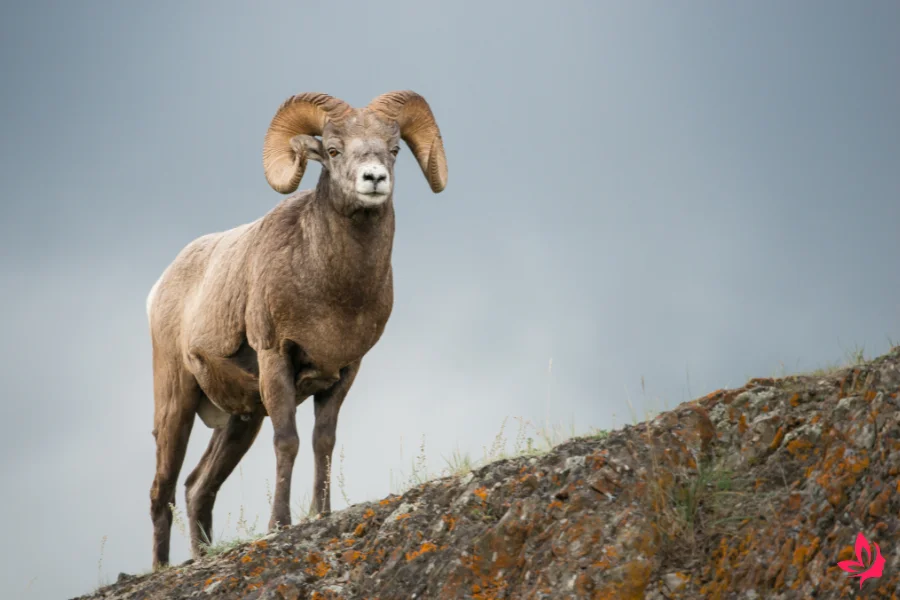
In Native American culture, animals hold profound symbolic significance. They offer spiritual guidance and embody various leadership qualities. They often serve as powerful tools in personal growth and cultural expression and are revered for their inner strength.
Understanding these roles can help one appreciate the deep connections between humans and the animal world.
Animal Spirit Guides in Native American Culture
Animal spirit guides, often called power animals, serve as protectors and teachers for individuals. Native American tribes believe these guides teach personal growth and spiritual strength.
Different animals embody unique qualities and functions. For example, a wolf may represent strong bonds, while an eagle can symbolize a broader vision and wisdom.
These spirit guides link to the spiritual world, helping individuals navigate different situations. They are often seen as embodiments of natural qualities a person needs to overcome life’s challenges or gain insight.
Leadership and the Ram Spirit Animal
Within the animal kingdom, the ram stands out as a symbol of leadership and determination. It embodies an inner power that demands courage and a clear vision, making it an excellent example of a powerful spirit animal.
The ram spirit animal is often associated with determination, quick thinking, and the ability to face challenges head-on.
In Native American traditions, the ram is seen as an emblem of leadership qualities such as strength and fortitude.
Business leaders and team members can draw inspiration from the ram’s traits of striving for excellence and resilience.
The Cultural Significance of Animal Totems
Animal totems are crucial in Native American traditions, serving as guides and symbols of identity for individuals and communities.
These totems represent animal species that connect with people on a spiritual level. They often embody the belief systems of Native American tribes, which view animals as spiritual beings with their significance.
Various cultures celebrate different animal personalities and their symbolic meanings through totems. For instance, the eagle is revered for its courage and leadership; the bear symbolizes strength and protection.
Such totems are powerful archetypes, helping individuals connect with their inner animal and develop strong relationships with their community and environment.
Building Strong Relationships Through Animal Leadership
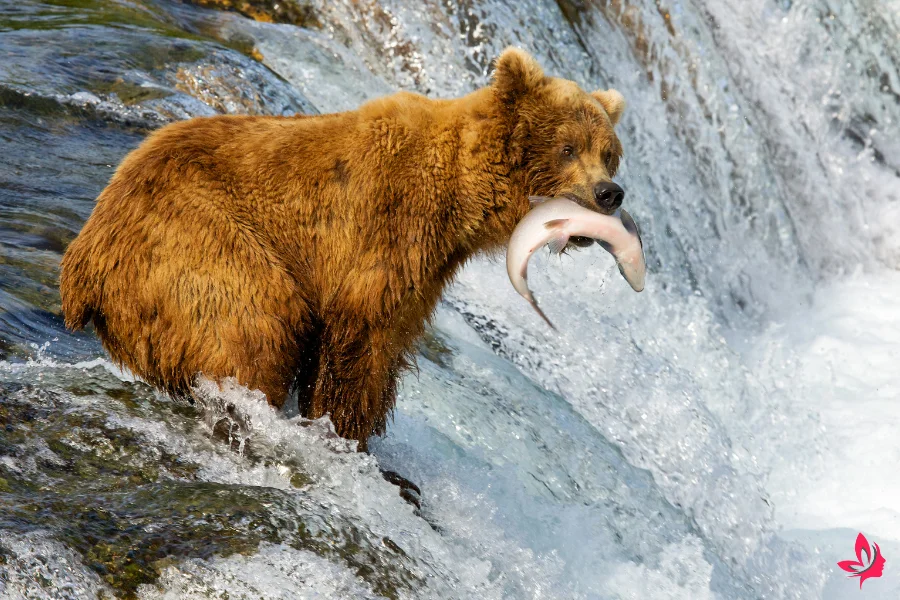
Animal leadership provides a powerful framework for fostering strong relationships within teams. By examining how different animals demonstrate leadership, one can learn to build effective bonds that benefit individual team members and the group.
The Importance of Strong Bonds in Team Members
Strong social bonds are essential in the animal kingdom. For instance, wolves are known for their cooperative pack structure, where each member plays a crucial role in the group’s success. This reflects the importance of strong bonds in building a cohesive team.
Native American cultures often look to animals, like the wolf and the bear, as symbolic guides for fostering unity and collaboration. These connections serve as power animals that help individuals channel leadership qualities needed in a cooperative environment.
For business leaders, embracing this model can result in stronger, more effective teams. Like animal groups, organizations rely on trust and collaboration to achieve common goals.
Good Leaders as Role Models in the Business World
Good leaders act as role models by embodying traits admired in animal leaders.
Lions, often called the jungle kings, exhibit courage and protectiveness over their pride. These qualities make them effective leaders in the business world.
This symbolic meaning translates to confidence and assertiveness while encouraging others to follow their lead.
Observing apex predators, one can see the value of maintaining authority while still showing a caring attitude toward team members.
Role models are not just figures of authority but are also considered trusted guides, fostering personal growth. Like ancient Greek heroes, they are looked upon as figures of wisdom and strength. A good role model in business supports individual development within the team.
How Animal Leadership Traits Foster Team Success
Animal leadership traits, such as elephants’ protective nature or ants’ intricate teamwork, provide valuable lessons.
These animals teach us the importance of communication, adaptability, and hard work, vital for team success.
In many ancient cultures, totem animals, such as the jaguar or eagle, were revered for their powerful spirit and unique abilities.
Such animal symbols inspire teams to pursue ambitious goals while maintaining a deep connection with each other.
By embracing these traits, teams can thrive in various environments. Adopting strategies observed in the animal world encourages members to use their unique talents, ultimately leading to a more prosperous and collaborative effort.
Final Thoughts
Leadership is often symbolized by various animals known for their power and strength. The lion stands out as a symbol of courage and leadership among the many.
The bear, buffalo, and jaguar also represent strength and are commonly linked with leadership qualities. These animals contribute unique aspects of power, protection, and determination.
In spiritual symbolism, the gorilla represents leadership with its dominance and protective instincts. Similarly, the silverback is a powerful emblem of right rule and guidance.
The mountain lion is noted for its leadership abilities, demonstrating how different creatures contribute to the image of strong leadership.
Key Takeaways:
- Lions symbolize courage and strength in leadership.
- Bears and buffalos emphasize power and protection.
- Gorillas embody dominance and protective leadership.
- Mountain lions highlight the ability to lead with strength.
These animals, each unique in their traits, help us understand different dimensions of leadership through the lens of power and strength.
Frequently Asked Questions
Animals that often symbolize leadership are known for their power, strength, and guidance. These symbols are drawn from nature and folklore and highlight the qualities admired in leaders.
What animal represents a leader?
The lion often represents a leader due to its courage and status as the “king of the jungle.” Its commanding presence and protective nature make it a powerful symbol of leadership.
What symbol represents a leader?
The eagle symbolizes leadership, embodying vision, authority, and freedom. Eagles are admired for their ability to soar high and see the bigger picture.
What animal symbolizes superiority?
The dragon is a mythical creature that often symbolizes superiority and dominance. The dragon is revered in many cultures for its strength and wisdom.
Which animal is known for leadership?
Lions are well-known for their leadership qualities, including strength and decisiveness. Their role as the leader of the pride underscores their symbolic association with natural leadership.
What animal follows the leader?
Wolves are known for following the leader, with the pack relying on the alpha for guidance and protection. This social structure highlights their cooperative nature.
What is animal leadership?
Animal leadership refers to the behaviors and hierarchies in animal groups where a dominant animal leads others. These structures ensure survival and efficiency within the group.
Does a lion symbolize leadership?
Yes, a lion is a common symbol of leadership due to its strength and ability to lead its pride. Its regal posture and courage contribute to this representation.
What does a wolf symbolize?
Wolves symbolize teamwork, loyalty, and strong social bonds. Known for their pack behavior, they are often seen as symbols of unity and perseverance.
What mythical creature represents leadership?
The phoenix, a mythical bird, represents leadership through its themes of rebirth and renewal. It signifies resilience and the ability to rise strong in challenging times.
What animal represents power and control?
The crocodile represents power and control. It shows dominance and primal strength. Its ancient presence and survival instinct make it an emblem of authority.




